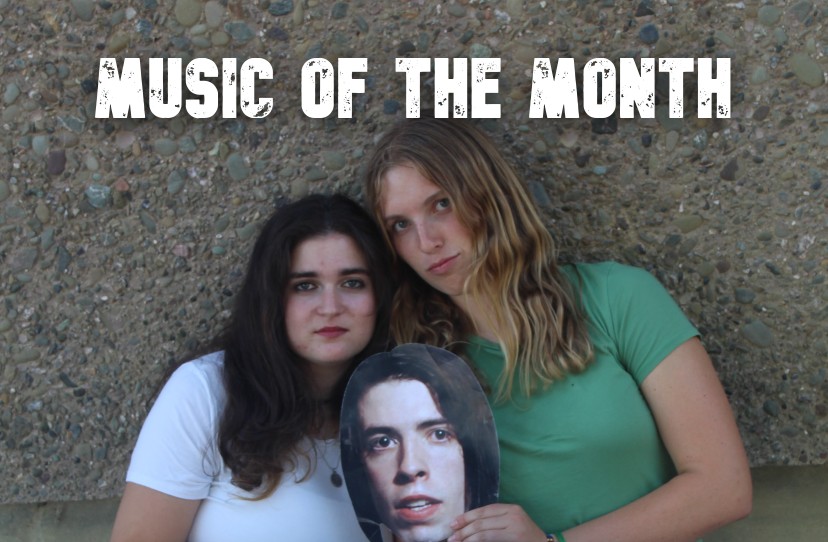Happy August! We are very excited to resume MOTM. Unfortunately, this is our final year writing this column. Nevertheless, as we enter into the new school year and get adjusted to our new schedules, we’d like to share some of our favorite songs that carried us through the summer and continue to play on repeat. Enjoy!
Cali’s Picks
“D’You Have A Car?” by SWMRS, “Drive North” (2016)
The ninth track on SWMRS’ third studio album, “Drive North,” “D’You Have A Car?” is the ultimate power-packing indie rock road trip song. The song opens up with an isolated bassline delivered by Seb Mueller and Joey Armstrong’s hooky drum beats. There is a unique, quiet-loud structure featured in the verses with Cole Becker’s melodic voice underneath the distorted power chords that repeat after each line. The lower verse section is contrasted by the upbeat pre-chorus with impressive soloing (courtesy of Cole’s brother, Max Becker) that bleeds into the raucous, distorted symphony that serves as the chorus. The track features relatable lyrics that express the narrator’s desire to go driving in order to leave their doldrum life, embracing an “anywhere but here” mindset. The second verse follows the same structure as the first and continues to increase the feelings of wanderlust. During the rousing bridge, the Piedmont group touches on their Bay Area heritage through the lines “Webster, Broadway/Oakland save me.” After this, the composition quiets to an abridged chorus featuring solely Cole Becker on vocals and acoustic guitar. Succeeding this short break is a return to a full-blown, rocking chorus and outro where the chorus is repeated in beautifully rough vocals and the instrumentals reach an eclectic peak before booming to silence.
“Know Your Enemy” by Rage Against the Machine, “Rage Against the Machine” (1992)
Featuring Tool’s vocalist, Maynard James Keenan, “Know Your Enemy” is an extremely dynamic track that rocks the listener with mic-drop worthy lyrics, booming basslines, and face-melting guitar riffs. Serving as the sixth track on Rage Against the Machine’s self-titled debut album, the number begins in a slow, rhythmic manner with a smooth bassline and a vocal callout by Zach de la Rocha. Guitarist Tom Morello breaks the band out of this melodic trip courtesy of a racing staccato riff that brings de la Rocha to the cry of “know your enemy.” The powerful verses are peak rock-rap, delivering both hard-hitting lyrics and instrumentals in a heavy, fast-paced fashion. With each reprise, the group returns to the rollicking riffs of Morello and the yell of “know your enemy” by de la Rocha. Following the second chorus, the composition slows down and Keenan hops on the mic to sing an expressive bridge that carries directly into Tim Commerford’s distorted bassline and Morello’s heavily experimental guitar solo that brings the energy of the track back up. After this instrumental break, the tune transitions to the outro, where the instrumental sections steadies as de la Rocha shouts his closing words, ending the composition with the repetition of the critical line “all of which are American dreams.” With themes of anti-authoritarianism and anti-war as seen in modern America, “Know Your Enemy” has served to become a strong protest song, as well as a staple for fans of the band.
“Chelsea Dagger” by The Fratellis, “Costello Music” (2006)
Serving as the longtime goal song of the Chicago Blackhawks, “Chelsea Dagger” is a unique, garage-rock era composition consisting of catchy hooks and melodies; prominent drum beats, and raw guitar riffs. The title derives on a clever play on Britney Spears (Britney=Chelsea, Spears=Dagger), that also acts as lead vocalist and guitarist, Jon Fratelli’s girlfriend’s burlesque name. The peppy number kicks off with Mince Fratelli’s rolling drum section that is shortly accompanied by Jon Fratelli’s snappy guitar riffs and vocal howl that transitions the number to the famous harmonized group chants that come before each verse. The verse sections take the energy a step down, focusing on the playful lyrics and complex chords before building up to the catchy choruses and refrain to the intro chants. The composition carries the same structure throughout until reaching a slamming instrumental break, featuring distinguished drums that ooze with the sounds of early 2000s indie and garage rock. Following this rhythmic break, the song transitions into the vocal bridge and the anthemic outro that highlights the melodies and harmonies established, as well as the musicianship of the band. Although “Chelsea Dagger” serves as The Fratellis’ biggest hit to this day, the Scottish indie rock group has grown to both love and hate it, as it took away from their other songs, but it provided them the opportunity to travel the world and flourish as musicians.
Brianna’s Picks
“The Archer” by Greta Van Fleet, “Starcatcher” (2023)
The eighth track on Greta Van Fleet’s (GVF) third studio album is a submersive experience that is driven by complex riffs, explosive drumming, breath taking vocals, and pungent bassline. This five-minute cinematic track includes a variation of stylistic choices that in turn all complement each other: an intricate intro to hook the listener, a hard hitting bridge to further push the tale, a more mellow outro to provide a sense of relief following the weighted choruses. The elements of the song’s composition can be reflected through the troubled Archer’s narration. Through a larger scope, the equivocal lyricism in the song greatly corresponds to GVF’s trend of curating tracks, albums, and concepts through open-ended themes and stories, whether applicable to a listener or not. These ideas are also told through the instrumentation: the urgency of the intro, the suspense building to the refrains, and the embellished bridge. Heavily emphasized lines are “Torn, I turn to my bow, Sara” and the following, similar mantra, “Torn, I turn to my arrow, Sara.” ‘Saraha,’ which translates to ‘the Archer’ in the Tibetan language, one source ― in addition to the bow, arrow, and the participation of archery ― cites that Tibetan “archery was believed to be a way of connecting with the divine and harnessing spiritual energy.” Using this concept to connect to other tracks on the album, “The Archer” provides the very tip of the iceberg that seeps into the succeeding song, “Meeting the Master,” which continues the perspective of a lower being but redirects the focal point to a celestial being. Uncommon in most styles, “The Archer” does not follow a rhyming scheme in the verses. Instead, the center of the track in the verses and choruses highlight the focus of the storyline, creating a more authentic and raw tonality until the end of the second chorus and into the transition. This section can be seen describing the emptiness and turmoil the narrator has been facing; “The Archer” is told in a quintessential account of the tragic hero. The bridge stands for a lot more than just its contrasting composition to the rest of the track. With this section of the track, the bridge introduces a rhyming technique which can be seen as signifying the shocking insight to the Archer’s inevitable, fateful end.
“Strange Street Affairs Under Blue” by Tim Buckley, “Tim Buckley” (1966)
Buckley is a household name in the music community. The father of Jeff Buckley, Tim Buckley became known to pioneer the fusion of genres in his works. Through the release of his debut album at just 19, Tim combined folk, avant-garde, funk, and jazz. These qualities can best be noted in the fourth track “Strange Street Affairs Under Blue.” The track follows an overall experimental composition: a distinct vocal quality, accelerating tempos, and contrasting sections. The song opens with a stagnant guitar which is later accompanied by sustained vocals. The lyrics themselves follow trends of poetry structure and follow an AABB rhyme pattern. “Strange Street Affairs Under Blue” consists of three verses with six lines, a bridge of three lines and two vocalises, and a final verse with four lines. The cult classic singer brings the track to an abrupt end, closing with a presumptuous thought.
“Dust N’ Bones” by Guns N’ Roses, “Use Your Illusions I” (1991)
This vastly underrated track off of Guns N’ Roses’ (GNR) chart-topping, third studio album features their original rhythm guitarist Izzy Stradlin on lead vocals. While the writing is credited to Slash, Duff McKagan, and Stradlin, frontman Axl Rose is still heard with his background vocals and harmony counterpart to Stradlin. The lyrics take on an existentialist perspective most notably in the lines “Time moves on, that’s the way/We live in hope to see the next day, but that’s alright.” The straightforward simplicity of an individual’s choice to make the most out of life is prevalent throughout the track that also discusses GNR’s serpentine romances throughout the ‘80s. Looking past the obvious themes and actions of the time, Guns N’ Roses wrote stories with amazing undertones (especially within the “Use Your Illusions” double album). Overall, the track hones in on one central idea: What’s the point? In the end, we all become dust and bones; it’s just a matter of how and when. As for the instrumentation, “Dust N’ Bones” owes a prominent organ and keyboard to Dizzy Reed, providing a bluesy feel to the hard rock track and adding an additional layer on top of the harmonies, leader/chorus call and response, and distinct heavy guitar tones.
















